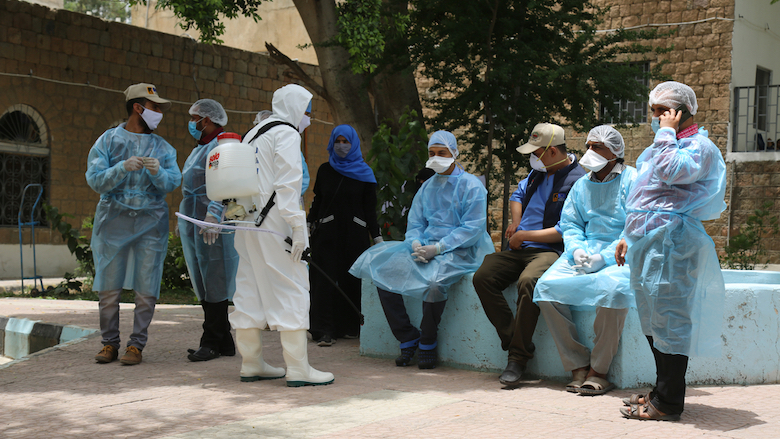An unprecedented protracted humanitarian crisis, aggravated by COVID-19, leaves many Yemenis mostly dependent on relief and remittances. Socio-economic conditions are deteriorating rapidly, driven by a currency depreciation, trade disruptions, rising food prices, severe fuel supply shortages, disruption and downsizing of humanitarian operations. Intensifying violence and fragmentation of macroeconomic policies add further strains on the fragile economic conditions, and the population is at risk of famine in 2021.
Recent Developments
The economy contracted sharply from an already low base. The oil sector — the only large export earner — was hard-hit by low global oil prices. Non-oil economic activity suffered significantly from COVID-19-related trade slowdown and exceptionally heavy rainfalls, which caused intense flooding, damage and loss of life. Foreign exchange shortages deepened further with the near depletion of Saudi Arabia’s basic import finance facility, reduced oil revenues, and downsizing of humanitarian assistance.
Inflation has accelerated quickly in 2020. The weakening of the rial played a major role; other factors such as COVID-19 related disruptions, insecurity, trade restrictions and associated fuel shortages have also influenced price dynamics. The national average cost of the Minimum/Survivable Food Basket increased by 4% in December 2020 (m-o-m) and by 30% (yoy).
Outlook
Economic and social prospects in 2021 and beyond are highly uncertain. A gradual recovery of global oil prices with increasing national production and export capacity, would help ease the strain on public finances in the government-controlled areas; means to support the government in payment of civil salaries would also reduce the recourse to central bank financing. Urgent progress to implement past agreements concerning access to supplies and fuel imports through Hodeidah would improve prices and access to food, the provision of public services and the operational environment for humanitarian operations.
